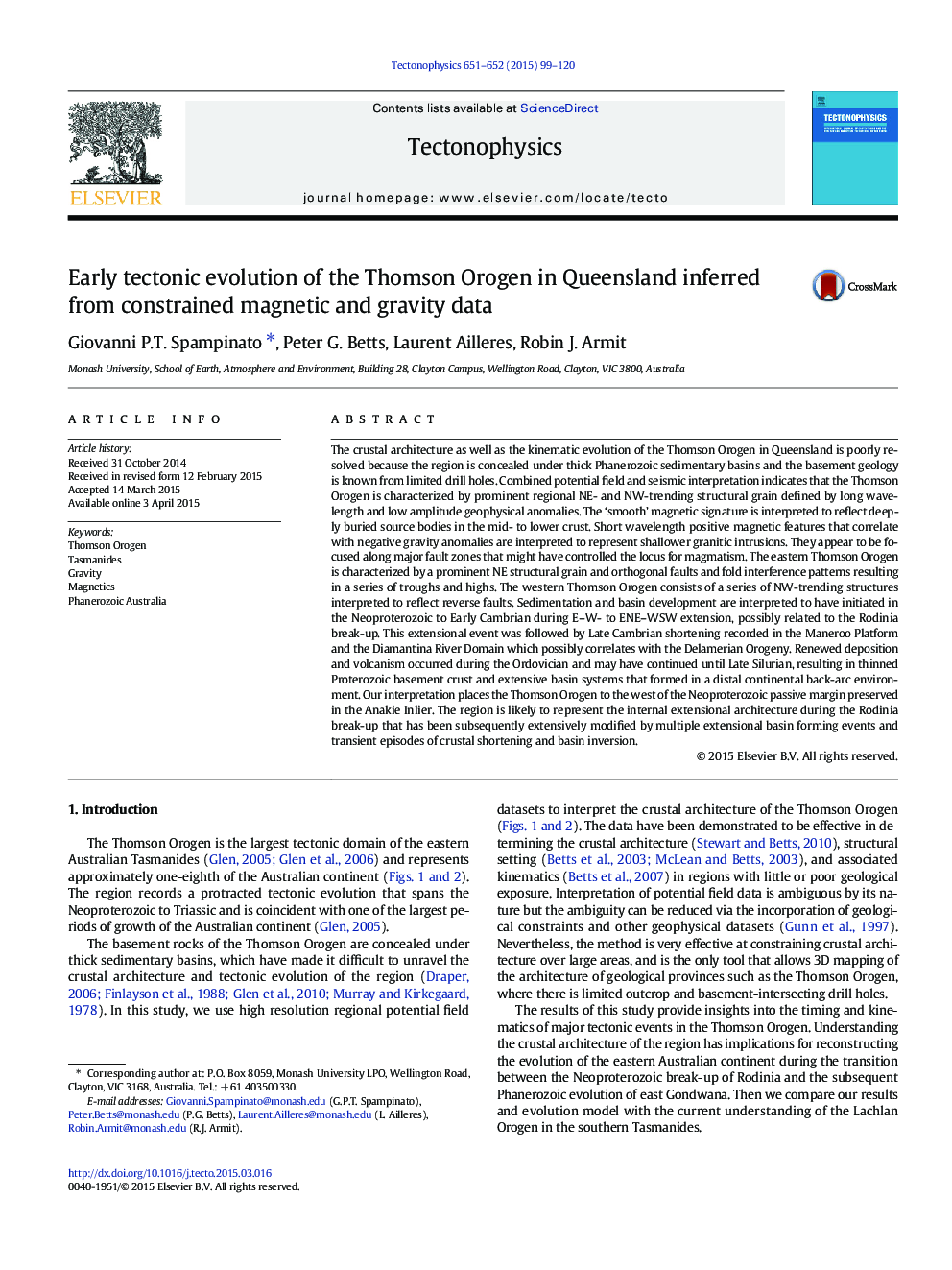| کد مقاله | کد نشریه | سال انتشار | مقاله انگلیسی | نسخه تمام متن |
|---|---|---|---|---|
| 4691628 | 1636743 | 2015 | 22 صفحه PDF | دانلود رایگان |

• The Thomson Orogen is characterized by regional NE- and NW-trending structural grain.
• The smooth magnetic signature reflects source bodies in the mid- to lower crust.
• Neoproterozoic extension in the Thomson Orogen occurred in a continental setting.
• Rodinia break-up did not occur along the Cork Fault.
The crustal architecture as well as the kinematic evolution of the Thomson Orogen in Queensland is poorly resolved because the region is concealed under thick Phanerozoic sedimentary basins and the basement geology is known from limited drill holes. Combined potential field and seismic interpretation indicates that the Thomson Orogen is characterized by prominent regional NE- and NW-trending structural grain defined by long wavelength and low amplitude geophysical anomalies. The ‘smooth’ magnetic signature is interpreted to reflect deeply buried source bodies in the mid- to lower crust. Short wavelength positive magnetic features that correlate with negative gravity anomalies are interpreted to represent shallower granitic intrusions. They appear to be focused along major fault zones that might have controlled the locus for magmatism. The eastern Thomson Orogen is characterized by a prominent NE structural grain and orthogonal faults and fold interference patterns resulting in a series of troughs and highs. The western Thomson Orogen consists of a series of NW-trending structures interpreted to reflect reverse faults. Sedimentation and basin development are interpreted to have initiated in the Neoproterozoic to Early Cambrian during E–W- to ENE–WSW extension, possibly related to the Rodinia break-up. This extensional event was followed by Late Cambrian shortening recorded in the Maneroo Platform and the Diamantina River Domain which possibly correlates with the Delamerian Orogeny. Renewed deposition and volcanism occurred during the Ordovician and may have continued until Late Silurian, resulting in thinned Proterozoic basement crust and extensive basin systems that formed in a distal continental back-arc environment. Our interpretation places the Thomson Orogen to the west of the Neoproterozoic passive margin preserved in the Anakie Inlier. The region is likely to represent the internal extensional architecture during the Rodinia break-up that has been subsequently extensively modified by multiple extensional basin forming events and transient episodes of crustal shortening and basin inversion.
Journal: Tectonophysics - Volumes 651–652, 31 May 2015, Pages 99–120